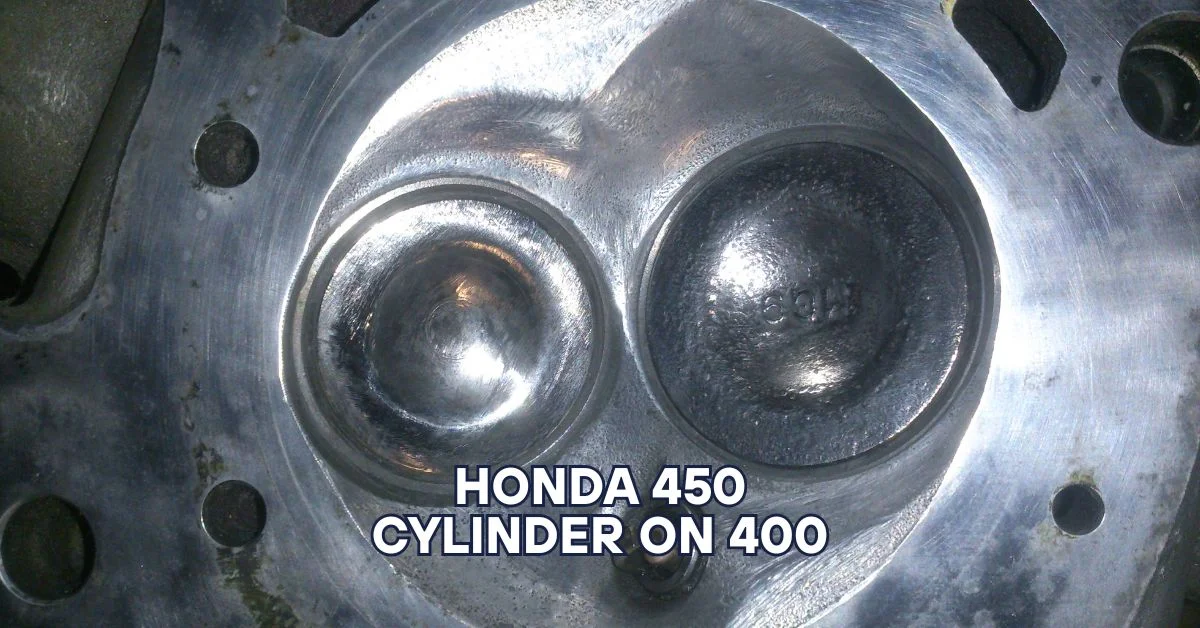In the high-performance world of off-road motorcycling and ATV customization, engine upgrades are often a mixture of mechanical artistry and precise engineering. One of the most intriguing questions that comes up in enthusiast forums, garages, and race pits is this: Can you run a Honda 450 cylinder on 400 motor? The short answer? Yes—with critical considerations.
This article provides a deep, informative dive into this popular modification: fitting a Honda 450 cylinder on 400 base engine, most commonly within the XR, CRF, and TRX series of Honda dirt bikes and quads. We’ll look at why riders attempt this mod, what they gain, what’s at risk, and how to execute it (or not) with mechanical confidence.
Why Modify a Honda 450 Cylinder on 400?
1. Boost in Torque and Power
The 450 cylinder allows for a higher compression ratio, increased displacement, and enhanced low-end torque—particularly useful for trail riding, enduro, and motocross.
2. Parts Availability
450 engines are newer, more widely supported in aftermarket catalogs, and often easier to source than original 400 components.
3. Better Thermal Efficiency
Some newer 450 cylinders use improved casting and heat dissipation designs, helping the engine stay cooler under pressure.
READ MORE: ProgramGeeks Social in 2025: Connecting Coders, Creators, and Innovation Communities
Compatibility Basics: What You Need to Know
a) Engine Series Matching
Most successful swaps occur between the same family, such as:
- XR400 to CRF450
- TRX400EX to TRX450R
Mixing models (e.g., trail vs race variants) adds complexity due to different porting, timing curves, and coolant routing.
b) Stroke vs Bore Considerations
Swapping the top end doesn’t change stroke—only bore. You must ensure the piston deck height and cylinder skirt align with the crank throw of the 400.
c) Head Compatibility
Some 450 cylinders are optimized for matching 450 heads. In many cases, you’ll need to:
- Modify the combustion chamber
- Match the coolant ports
- Use hybrid gaskets or shims
Tools and Components Required
- Micrometer & calipers for measurements
- Torque wrench and valve feeler gauge
- Piston kit (often 450-specific)
- Gasket set or custom-cut gaskets
- Cylinder base spacer (if required)
- ECU tuning software (if EFI)
- Porting polish kit (optional)
Benefits: What You Might Gain
| Performance Metric | Stock 400 | 450 Cylinder Mod | Gain Type |
|---|---|---|---|
| Torque (Nm) | ~35 | ~40-45 | Low-end grunt |
| Horsepower (HP) | ~28-30 | ~36-40 | Midrange |
| Cooling Efficiency | Moderate | Improved | Heat handling |
| Throttle Response | Delayed | Sharper | Rider control |
These numbers will vary depending on tuning, terrain, rider weight, and altitude.
Risks and Challenges
1. Crankshaft Stress
The 400’s bottom end may not be engineered for 450 combustion pressures. Over time, this could cause premature wear.
2. Carburetion or EFI Tuning
You’ll need to remap fuel delivery to avoid running lean—especially if using the 400 carburetor on a 450 bore.
3. Oil Cooling System Mismatch
450 cylinders generate more heat. You may need to upgrade oil coolers or switch to synthetic high-performance oil blends.
4. Legal and Warranty Limitations
If you ride on regulated trails or under competition rules, modifying engine displacement may affect class eligibility.
READ MORE: Samantha Top USA: Understanding a Name Gaining Attention in 2025
Installation Walkthrough (High-Level)
Step 1: Remove the 400 top end and assess bore condition.
Step 2: Test fit the 450 cylinder base. Confirm gasket alignment and stud pattern.
Step 3: Verify piston-to-valve clearance. Shim valves if needed.
Step 4: Assemble with proper torque specs, break-in oils, and a conservative idle test.
Step 5: Ride gently for the first few hours. Monitor for overheating, leaks, or pinging.
Real-World Rider Experiences
Many amateur builders report successful installations that result in more enjoyable trail and dune riding. However, a few common issues crop up:
- Blown base gaskets from improper torque
- Overheating in high summer conditions
- Pinging due to compression mismatch
Veteran builders stress the importance of not skipping compression tests, leak-down checks, and cooling upgrades.
Tuning Tips Post-Swap
- Re-jet the carb or remap EFI for your altitude and climate
- Run premium fuel to prevent knocking
- Upgrade exhaust to match increased output
- Consider digital ignition to optimize spark timing
Should You Do It?
This isn’t a beginner-level mod. It requires:
- Mechanical skill
- Diagnostic tools
- Willingness to troubleshoot
However, for mechanically inclined riders looking to get more out of a beloved 400 platform, this mod brings measurable gains in torque and thrill.
Alternative Power-Up Options
If a full cylinder swap sounds risky, consider:
- Big bore kits designed specifically for the 400
- High-compression pistons with stock cylinder
- Performance cams
- Free-flow air filters and tuned exhaust
These upgrades may not equal the full output of a Honda 450 Cylinder on 400 but offer safer and often cheaper paths to improvement.
Final Thoughts
Putting a Honda 450 cylinder on 400 engine is not just a mechanical experiment—it’s a dialogue between past and future technology. Done right, it revitalizes an older machine with new force, proving that innovation often starts in home garages.
It’s an ambitious project that blends performance gain with DIY spirit. But it rewards patience, precision, and preparation with every twist of the throttle.
FAQs
1. Can I use the stock 400 head with a 450 cylinder?
Possibly, but combustion chamber and valve alignment must be evaluated carefully.
2. Do I need to change the ECU or CDI unit?
If EFI, yes. For carb models, you may still need to adjust ignition timing with aftermarket CDI.
3. Will this work on TRX models as well as dirt bikes?
Yes, with model-specific compatibility checks. TRX400EX and TRX450R swaps are well documented.
4. What kind of performance gain should I expect?
Riders often report 20–30% torque gains and improved throttle response, especially at mid-range RPM.
5. Is this modification street legal?
It depends on your region and whether the bike is registered. Always check local laws.









